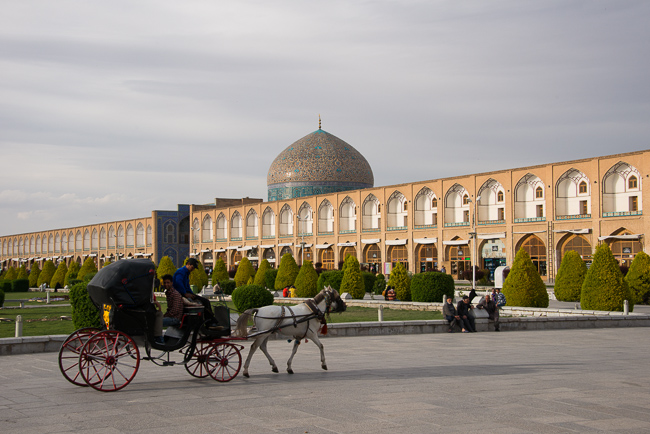
One must visit Iran to understand how warm, gracious and pro-American the people are.
After our recent journey through the country, we wholeheartedly agreed with travel consultant and journalist, Rick Steves, who reported during his visit to Iran: “In no other country have I considered it such an asset to be an American.” He was referring to the extraordinary welcome and hospitality he received everywhere he went.
Home to some of the oldest civilizations on the planet, Iran has a rich cultural history. And Iranians, who consider themselves Persians (don’t call them Arabs—they’ll quickly correct you!), are justifiably proud of their legacy in the areas of art, architecture, science and literature. Three times the size of France, the county has some of the world’s highest reserves of petroleum, natural gas, zinc, copper and uranium.
Today, almost half of Iran’s population of roughly 80 million is under the age of 25. We expected these young people to be religious, conservative and perhaps even hostile to Americans. Instead, they were extraordinarily friendly and open to a more secular lifestyle. Most own cell phones and laptops are are up-to-date on the latest software and apps.
Many women now wear the manteau, a mid-thigh-length jacket instead of the more traditional body-concealing chador and, in private, reportedly don contemporary fashions. They, in fact, hold over 60% of the country’s science and engineering degrees (according to a recent N.Y. Times editorial). And they’re advancing in fields ranging from cinema, tourism and publishing to computer science and telecommunications.
Key problems, nevertheless, persist in Iran. These include high inflation and unemployment, U.S./European Union economic sanctions, off-the-charts air pollution (especially in Tehran) and limited infrastructure for income-producing tourism.
Highlights of our trip included the beautiful cities of Esfahan and Shiraz, the peaceful gardens and busy bazaars throughout the country, the ancient ruins of Persepolis and, of course, opportunities to meet Iran’s welcoming people, always generous and full of a contagious joie de vivre.

Naqsh-e Jahan Square in the city of Esfahan, a UNESCO World Heritage site, is the second largest square on earth (behind Beijing’s Tiananmen Square in China).

The Citadel in Shiraz dates to the 18th-century Zand Dynasty. Shiraz is also the site of the tombs of renowned Persian poets Hafez and Sa’di.

Persepolis, center of the ancient Persian Achaemenid Empire (circa 500 B.C.), is yet another UNESCO World Heritage site. Over a period of 150 years it grew and became the hub of the greatest empire the world had known to date.

This beautiful Sufi shrine in the small town of Mahan, about 20 miles southeast of Kerman, honors the mystic poet, Shah Ne’matolleh Vali, who died in the 15th century at over 100 years of age. It’s one of the most recognizable images of eastern Iran.

A mother relaxes with her daughter in the Qajar-period (19th-century) Bagh-e Eram garden in Shiraz, one of Iran’s many meticulously designed green spaces where locals come to relax and socialize.
Recommended Reading: The Soul of Iran by Afshin Molavi and The Ayatollah Begs to Differ—The Paradox of Modern Iran by Hooman Majd (available on Amazon).
